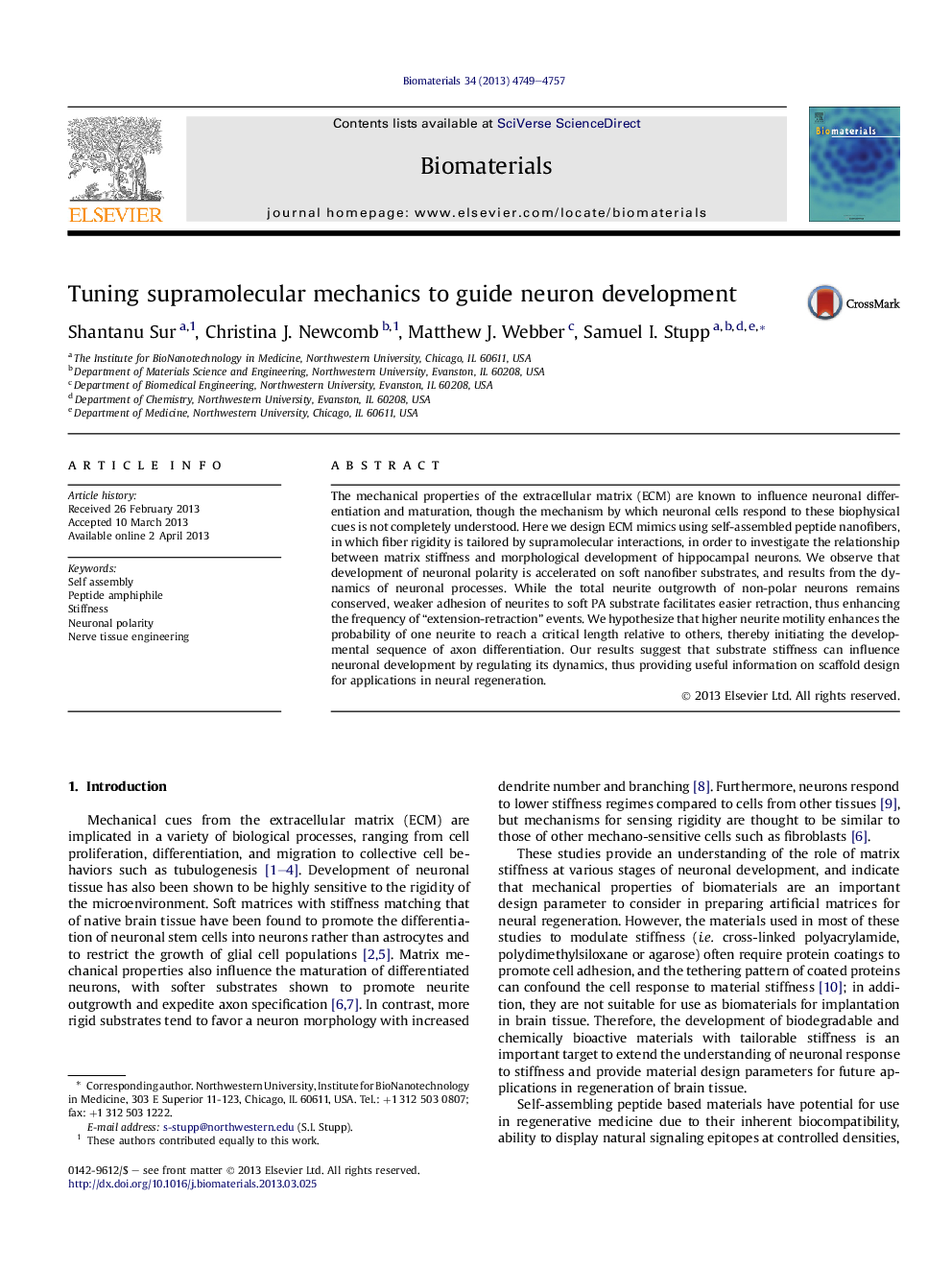| Article ID | Journal | Published Year | Pages | File Type |
|---|---|---|---|---|
| 6528 | Biomaterials | 2013 | 9 Pages |
The mechanical properties of the extracellular matrix (ECM) are known to influence neuronal differentiation and maturation, though the mechanism by which neuronal cells respond to these biophysical cues is not completely understood. Here we design ECM mimics using self-assembled peptide nanofibers, in which fiber rigidity is tailored by supramolecular interactions, in order to investigate the relationship between matrix stiffness and morphological development of hippocampal neurons. We observe that development of neuronal polarity is accelerated on soft nanofiber substrates, and results from the dynamics of neuronal processes. While the total neurite outgrowth of non-polar neurons remains conserved, weaker adhesion of neurites to soft PA substrate facilitates easier retraction, thus enhancing the frequency of “extension-retraction” events. We hypothesize that higher neurite motility enhances the probability of one neurite to reach a critical length relative to others, thereby initiating the developmental sequence of axon differentiation. Our results suggest that substrate stiffness can influence neuronal development by regulating its dynamics, thus providing useful information on scaffold design for applications in neural regeneration.
